Latest Posts by sidusglacies - Page 2

Claude Monet’s water structure and shades, II, transparent single picture version.

The North America Nebula, NGC 7000 // DaydreamAstro
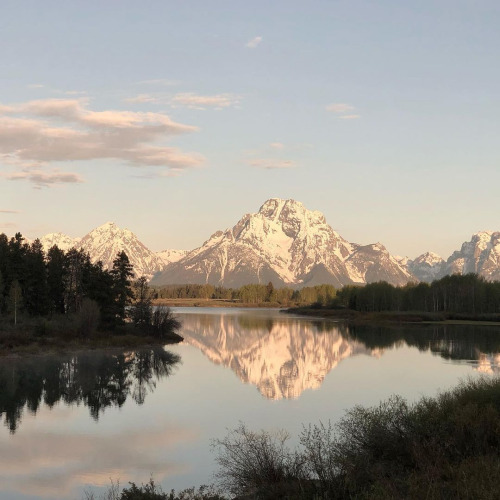
Grand Teton, Wyoming, photo by Mike Holloman


every charred tree stump i passed looked like a bleeding heart – a repost of the original, which had some details i wasn’t happy with.
I humbly request an earth fun fact that will fill me with terror
Mount Everest is about as physically high as a mountain is capable of getting on our planet!

this damn thing sticks a little more than 29,000 feet up into the air, and is getting a couple of inches taller every year thanks to the two tectonic plates violently smushing their faces together right beneath it, but it won't ever get significantly higher up than it is now.
(which is still Too Damn High in my opinion)

"but buuuuuunjy," you wail dolefully, "mountains get higher than that on other planets! why can't WE have a 16-mile high volcano. buuuunjy. answer me." which is technically true! but it can't happen here, for one reason:
it's because of gravity.

see, it's kind of weird to think about because it's literally your house, but Earth is actually the largest rocky planet in the solar system by a WIDE margin!
sure, Mars can have a 16-mile-tall volcano, but Mars is about HALF the size of our dear old mama Gaia and its gravity is scaled to match. less gravity means that mountains have less downward pressure on them and so they can grow to much greater heights!

Olympus Mons is only as big as it is, because of WHERE it is.
which brings us back to our earthly neighbor, Everest!
unlike Mons up there, Mount Everest is fighting a brutal and ongoing war against the oppressive forces of Earth's gravitational pull, made even more complicated by those tectonic plates I mentioned way back at the beginning of this whole mess.

basically the breakdown of this three-way offensive is that the Indian-Australian tectonic plate is having a very slow head-on collision with the Eurasian tectonic place, shoving the Himalaya mountains (and our good ol' pal Everest) UP! but gravity is also shoving DOWN on the whole range, and past a certain point the mountains get too tall and the entire affair is just too big and heavy for the tectonic plate underneath it to hold it upright, and then the bottom of the plate starts to sink downward into the molten rock of Earth's Mantle!
think of it like stacking dogs on one of those floating pool lounge thingies- you can stack as many dogs on there as you like, but the float will just sink deeper and deeper in the water and your dog stack won't really get any higher.

though obviously, they are still all good boys.
it's like that!
so basically, Everest is about at the point where the tectonic plate beneath it is sinking at roughly the same rate the mountain is growing, so the whole thing is locked into equilibrium and will never get too much higher than it is now.

NEVER UNDERESTIMATE THE POWER OF A GOOD DOG METAPHOR.

Big Dipper
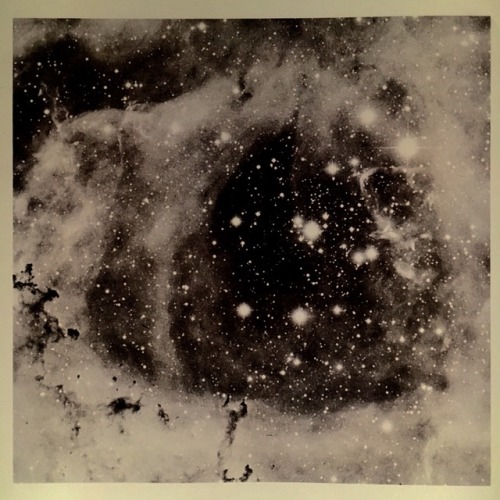
“This is a small example from an ambitious all-sky photographic survey completed during the mid to late 20th century. Every piece of sky was photographed on large glass plates. This astrophotography provided a catalog for astronomers to use in seeking out targets and planning observations. It is also an archival snapshot of the entire sky. Over 1,000 of these photographic plates were later digitized into a database used to aim Hubble.” (from the book Hubble’s Universe: Greatest Discoveries and Latest Images)
Weird Magnetic Behavior in Space
In between the planets, stars and other bits of rock and dust, space seems pretty much empty. But the super-spread out matter that is there follows a different set of rules than what we know here on Earth.
For the most part, what we think of as empty space is filled with plasma. Plasma is ionized gas, where electrons have split off from positive ions, creating a sea of charged particles. In most of space, this plasma is so thin and spread out that space is still about a thousand times emptier than the vacuums we can create on Earth. Even still, plasma is often the only thing out there in vast swaths of space — and its unique characteristics mean that it interacts with electric and magnetic fields in complicated ways that we are just beginning to understand.

Five years ago, we launched a quartet of satellites to study one of the most important yet most elusive behaviors of that material in space — a kind of magnetic explosion that had never before been adequately studied up close, called magnetic reconnection. Here are five of the ways the Magnetospheric Multiscale mission (MMS) has helped us study this intriguing magnetic phenomenon.
1. Seeing magnetic explosions up close
Magnetic reconnection is the explosive snapping and forging of magnetic fields, a process that can only happen in plasmas — and it’s at the heart of space weather storms that manifest around Earth.
When the Sun launches clouds of solar material — which is also made of plasma — toward Earth, the magnetic field embedded within the material collides with Earth’s huge global magnetic field. This sets off magnetic reconnection that injects energy into near-Earth space, triggering a host of effects — induced electric currents that can harm power grids, to changes in the upper atmosphere that can affect satellites, to rains of particles into the atmosphere that can cause the glow of the aurora.

Though scientists had theorized about magnetic reconnection for decades, we’d never had a chance to study it on the small scales at which it occurs. Determining how magnetic reconnection works was one of the key jobs MMS was tasked with — and the mission quickly delivered. Using instruments that measured 100 times faster than previous missions, the MMS observations quickly determined which of several 50-year-old theories about magnetic reconnection were correct. It also showed how the physics of electrons dominates the process — a subject of debate before the launch.
2. Finding explosions in surprising new places
In the five years after launch, MMS made over a thousand trips around Earth, passing through countless magnetic reconnection events. It saw magnetic reconnection where scientists first expected it: at the nose of Earth’s magnetic field, and far behind Earth, away from the Sun. But it also found this process in some unexpected places — including a region thought to be too tumultuous for magnetic reconnection to happen.
As solar material speeds away from the Sun in a flow called the solar wind, it piles up as it encounters Earth’s magnetic field, creating a turbulent region called the magnetosheath. Scientists had only seen magnetic reconnection happening in relatively calm regions of space, and they weren’t sure if this process could even happen in such a chaotic place. But MMS’ precise measurements revealed that magnetic reconnection happens even in the magnetosheath.

MMS also spotted magnetic reconnection happening in giant magnetic tubes, leftover from earlier magnetic explosions, and in plasma vortices shaped like ocean waves — based on the mission’s observations, it seems magnetic reconnection is virtually ubiquitous in any place where opposing magnetic fields in a plasma meet.
3. How energy is transferred
Magnetic reconnection is one of the major ways that energy is transferred in plasma throughout the universe — and the MMS mission discovered that tiny electrons hold the key to this process.
Electrons in a strong magnetic field usually exhibit a simple behavior: They spin tight spirals along the magnetic field. In a weaker field region, where the direction of the magnetic field reverses, the electrons go freestyle — bouncing and wagging back and forth in a type of movement called Speiser motion.

Flying just 4.5 miles apart, the MMS spacecraft measured what happens in a magnetic field with intermediate strength: These electrons dance a hybrid, meandering motion — spiraling and bouncing about before being ejected from the region. This takes away some of the magnetic field’s energy.
4. Surpassing computer simulations
Before we had direct measurements from the MMS mission, computer simulations were the best tool scientists had to study plasma’s unusual magnetic behavior in space. But MMS’ data has revealed that these processes are even more surprising than we thought — showing us new electron-scale physics that computer simulations are still trying to catch up with. Having such detailed data has spurred theoretical physicists to rethink their models and understand the specific mechanisms behind magnetic reconnection in unexpected ways.

5. In deep space & nuclear reactions
Although MMS studies plasma near Earth, what we learn helps us understand plasma everywhere. In space, magnetic reconnection happens in explosions on the Sun, in supernovas, and near black holes.
These magnetic explosions also happen on Earth, but only under the most extreme circumstances: for example, in nuclear fusion experiments. MMS’ measurements of plasma’s behavior are helping scientists better understand and potentially control magnetic reconnection, which may lead to improved nuclear fusion techniques to generate energy more efficiently.

This quartet of spacecraft was originally designed for a two-year mission, and they still have plenty of fuel left — meaning we have the chance to keep uncovering new facets of plasma’s intriguing behavior for years to come. Keep up with the latest on the mission at nasa.gov/mms.
Make sure to follow us on Tumblr for your regular dose of space: http://nasa.tumblr.com




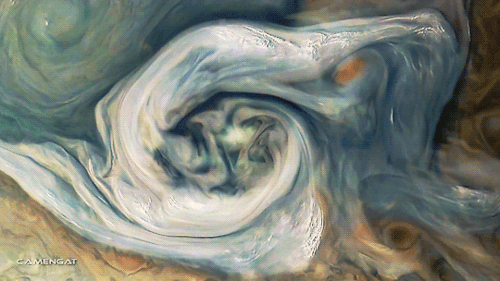





Planet: Jupiter


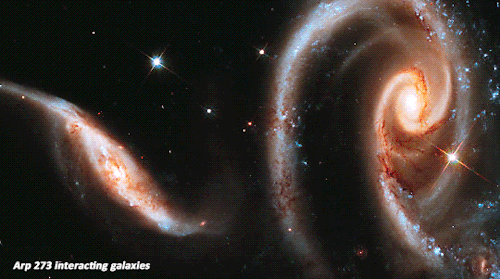




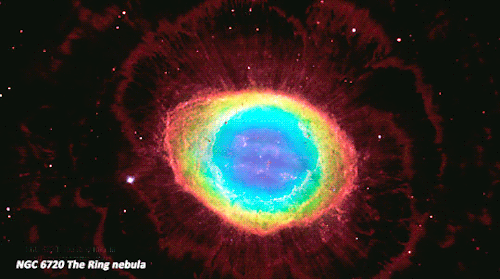


The Best of Hubble_1

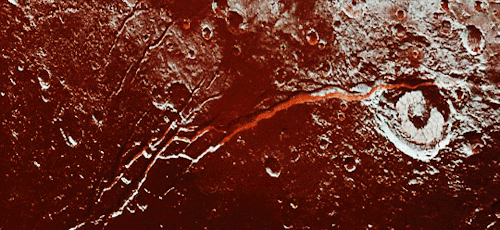
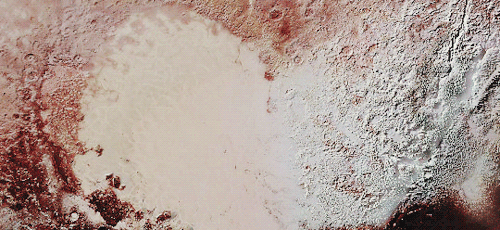
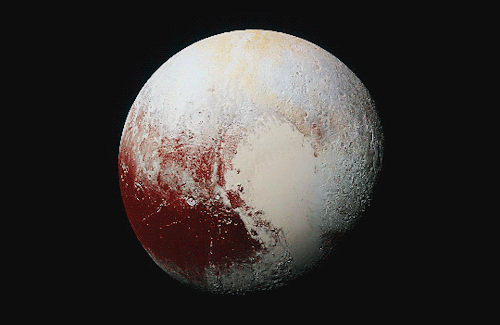
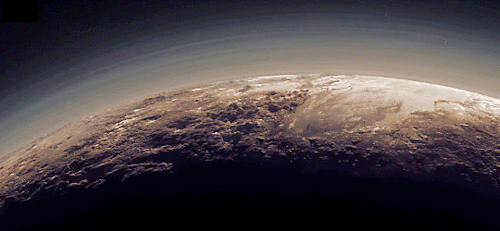
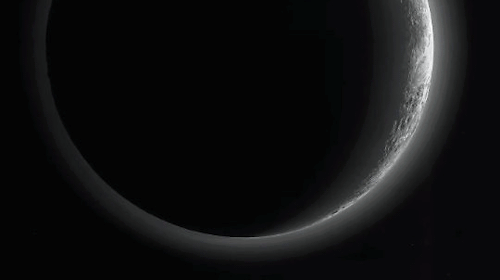
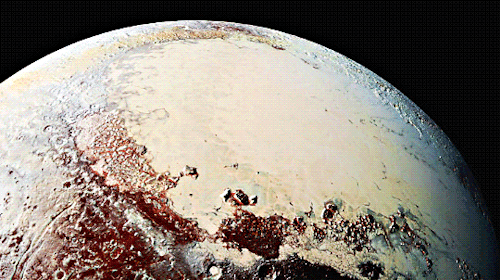
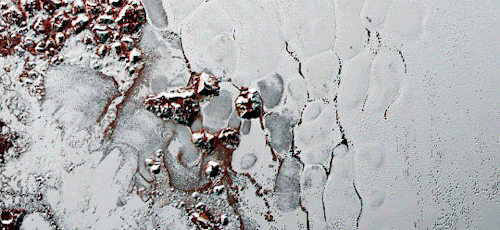

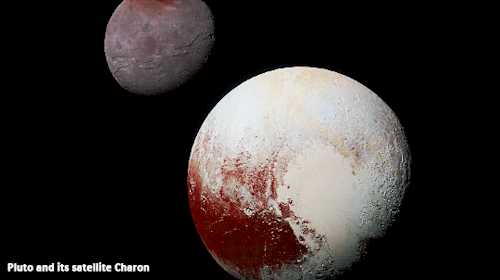
Pluto as seen from NASA’s New Horizons spacecraft ; Its heart-shaped sea is filled with poisonous ice.



source



Gökyüzüne sevgim hiç bitmeyecek belli ki ... 😌


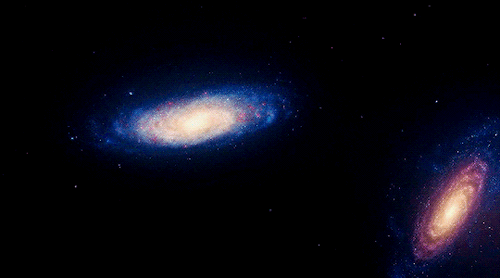
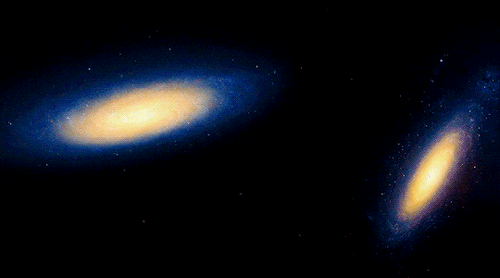
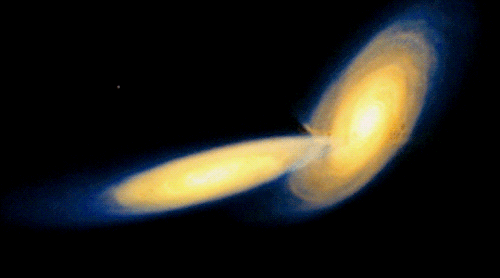
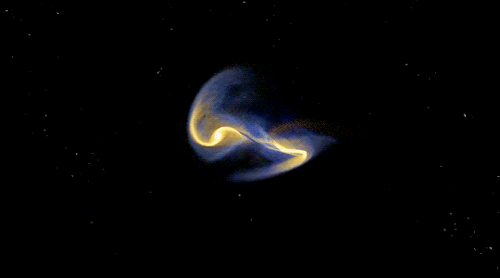
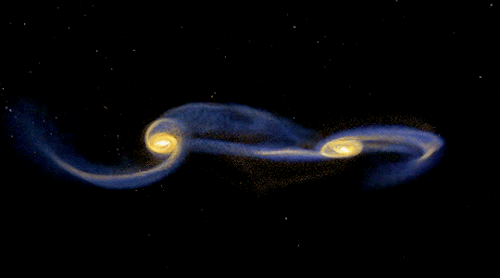
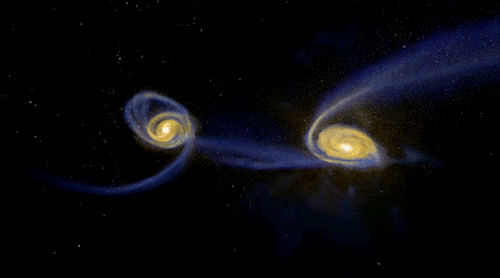
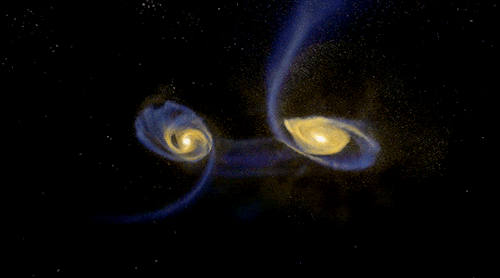
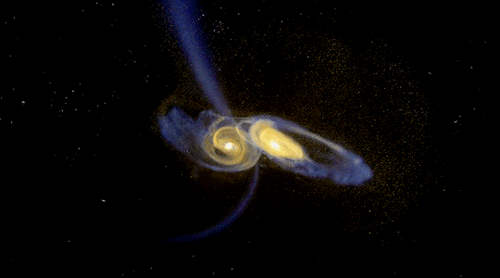
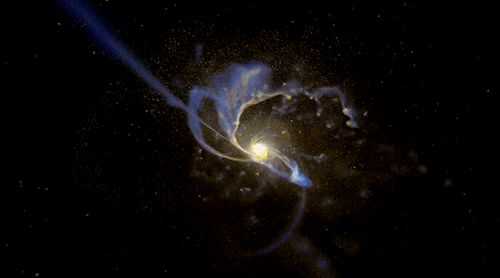
“Using nothing more than Newton’s laws of gravitation, we astronomers can confidently predict that several billion years from now, our home galaxy, the Milky Way, will merge with our neighboring galaxy Andromeda. Because the distances between the stars are so great compared to their sizes, few if any stars in either galaxy will actually collide.
Any life on the worlds of that far-off future should be safe, but they would be treated to an amazing, billion-year-long light show a dance of a half a trillion stars to music first heard on one little world by a man who had but one true friend.”
COSMOS: A Spacetime Odyssey (2014) written by Ann Druyan and Steven Soter
You know what? It’s really like that sometimes.
A Tour of Storms Across the Solar System

Earth is a dynamic and stormy planet with everything from brief, rumbling thunderstorms to enormous, raging hurricanes, which are some of the most powerful and destructive storms on our world. But other planets also have storm clouds, lightning — even rain, of sorts. Let’s take a tour of some of the unusual storms in our solar system and beyond.
Tune in May 22 at 3 p.m. for more solar system forecasting with NASA Chief Scientist Jim Green during the latest installment of NASA Science Live: https://www.nasa.gov/nasasciencelive.

1. At Mercury: A Chance of Morning Micrometeoroid Showers and Magnetic ‘Tornadoes’
Mercury, the planet nearest the Sun, is scorching hot, with daytime temperatures of more than 800 degrees Fahrenheit (about 450 degrees Celsius). It also has weak gravity — only about 38% of Earth’s — making it hard for Mercury to hold on to an atmosphere.
Its barely there atmosphere means Mercury doesn’t have dramatic storms, but it does have a strange “weather” pattern of sorts: it’s blasted with micrometeoroids, or tiny dust particles, usually in the morning. It also has magnetic “tornadoes” — twisted bundles of magnetic fields that connect the planet’s magnetic field to space.

2. At Venus: Earth’s ‘Almost’ Twin is a Hot Mess
Venus is often called Earth’s twin because the two planets are similar in size and structure. But Venus is the hottest planet in our solar system, roasting at more than 800 degrees Fahrenheit (430 degrees Celsius) under a suffocating blanket of sulfuric acid clouds and a crushing atmosphere. Add to that the fact that Venus has lightning, maybe even more than Earth.
In visible light, Venus appears bright yellowish-white because of its clouds. Earlier this year, Japanese researchers found a giant streak-like structure in the clouds based on observations by the Akatsuki spacecraft orbiting Venus.

3. At Earth: Multiple Storm Hazards Likely
Earth has lots of storms, including thunderstorms, blizzards and tornadoes. Tornadoes can pack winds over 300 miles per hour (480 kilometers per hour) and can cause intense localized damage.
But no storms match hurricanes in size and scale of devastation. Hurricanes, also called typhoons or cyclones, can last for days and have strong winds extending outward for 675 miles (1,100 kilometers). They can annihilate coastal areas and cause damage far inland.

4. At Mars: Hazy with a Chance of Dust Storms
Mars is infamous for intense dust storms, including some that grow to encircle the planet. In 2018, a global dust storm blanketed NASA’s record-setting Opportunity rover, ending the mission after 15 years on the surface.
Mars has a thin atmosphere of mostly carbon dioxide. To the human eye, the sky would appear hazy and reddish or butterscotch colored because of all the dust suspended in the air.

5. At Jupiter: A Shrinking Icon
It’s one of the best-known storms in the solar system: Jupiter’s Great Red Spot. It’s raged for at least 300 years and was once big enough to swallow Earth with room to spare. But it’s been shrinking for a century and a half. Nobody knows for sure, but it’s possible the Great Red Spot could eventually disappear.

6. At Saturn: A Storm Chasers Paradise
Saturn has one of the most extraordinary atmospheric features in the solar system: a hexagon-shaped cloud pattern at its north pole. The hexagon is a six-sided jet stream with 200-mile-per-hour winds (about 322 kilometers per hour). Each side is a bit wider than Earth and multiple Earths could fit inside. In the middle of the hexagon is what looks like a cosmic belly button, but it’s actually a huge vortex that looks like a hurricane.
Storm chasers would have a field day on Saturn. Part of the southern hemisphere was dubbed “Storm Alley” by scientists on NASA’s Cassini mission because of the frequent storm activity the spacecraft observed there.

7. At Titan: Methane Rain and Dust Storms
Earth isn’t the only world in our solar system with bodies of liquid on its surface. Saturn’s moon Titan has rivers, lakes and large seas. It’s the only other world with a cycle of liquids like Earth’s water cycle, with rain falling from clouds, flowing across the surface, filling lakes and seas and evaporating back into the sky. But on Titan, the rain, rivers and seas are made of methane instead of water.
Data from the Cassini spacecraft also revealed what appear to be giant dust storms in Titan’s equatorial regions, making Titan the third solar system body, in addition to Earth and Mars, where dust storms have been observed.

8. At Uranus: A Polar Storm
Scientists were trying to solve a puzzle about clouds on the ice giant planet: What were they made of? When Voyager 2 flew by in 1986, it spotted few clouds. (This was due in part to the thick haze that envelops the planet, as well as Voyager’s cameras not being designed to peer through the haze in infrared light.) But in 2018, NASA’s Hubble Space Telescope snapped an image showing a vast, bright, stormy cloud cap across the north pole of Uranus.

9. At Neptune: Methane Clouds
Neptune is our solar system’s windiest world. Winds whip clouds of frozen methane across the ice giant planet at speeds of more than 1,200 miles per hour (2,000 kilometers per hour) — about nine times faster than winds on Earth.
Neptune also has huge storm systems. In 1989, NASA’s Voyager 2 spotted two giant storms on Neptune as the spacecraft zipped by the planet. Scientists named the storms “The Great Dark Spot” and “Dark Spot 2.”

10. It’s Not Just Us: Extreme Weather in Another Solar System
Scientists using NASA’s Hubble Space Telescope made a global map of the glow from a turbulent planet outside our solar system. The observations show the exoplanet, called WASP-43b, is a world of extremes. It has winds that howl at the speed of sound, from a 3,000-degree-Fahrenheit (1,600-degree-Celsius) day side, to a pitch-black night side where temperatures plunge below 1,000 degrees Fahrenheit (500 degrees Celsius).
Discovered in 2011, WASP-43b is located 260 light-years away. The planet is too distant to be photographed, but astronomers detected it by observing dips in the light of its parent star as the planet passes in front of it.
Make sure to follow us on Tumblr for your regular dose of space: http://nasa.tumblr.com.
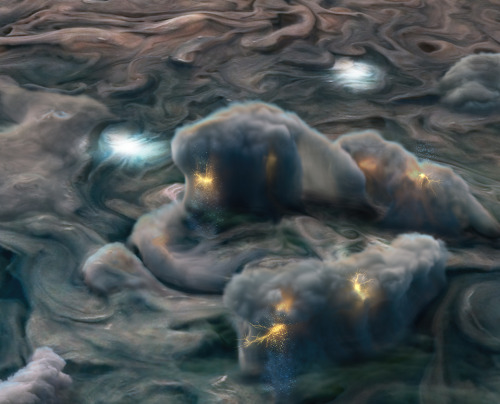
New results from our Juno mission suggest the planet is home to “shallow lightning.” An unexpected form of electrical discharge, shallow lightning comes from a unique ammonia-water solution.
It was previously thought that lightning on Jupiter was similar to Earth, forming only in thunderstorms where water exists in all its phases – ice, liquid, and gas. But flashes observed at altitudes too cold for pure liquid water to exist told a different story. This illustration uses data obtained by the mission to show what these high-altitude electrical storms look like.
Understanding the inner workings of Jupiter allows us to develop theories about atmospheres on other planets and exoplanets!
Illustration Credit: NASA/JPL-Caltech/SwRI/MSSS/Gerald Eichstädt/Heidi N. Becker/Koji Kuramura
Make sure to follow us on Tumblr for your regular dose of space: http://nasa.tumblr.com
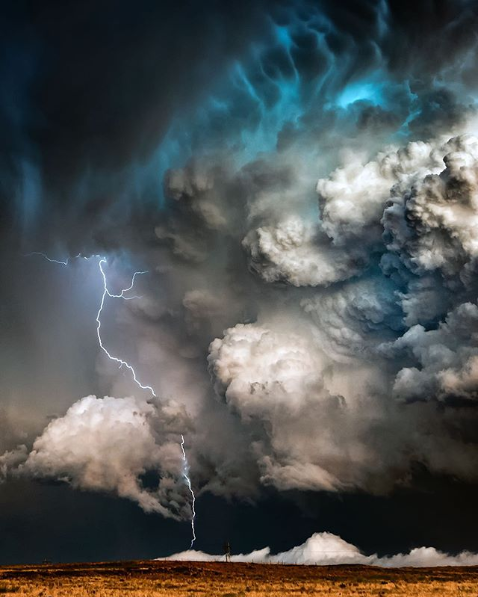
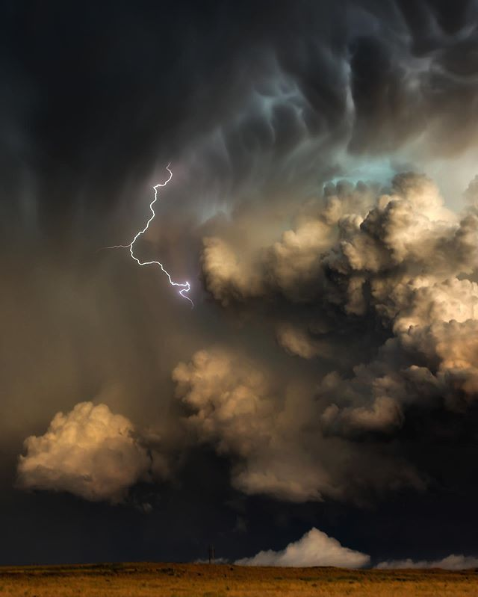
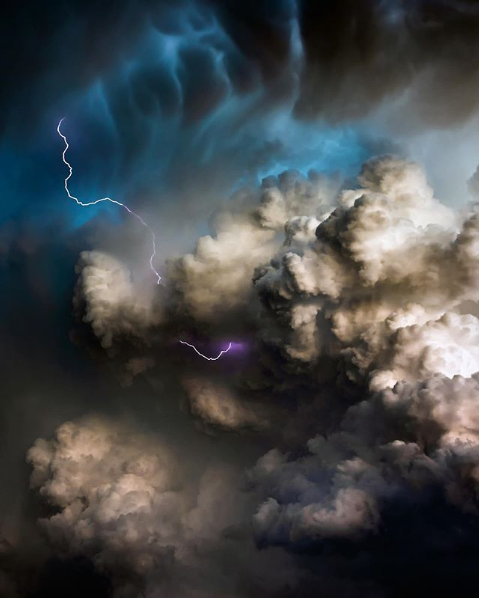
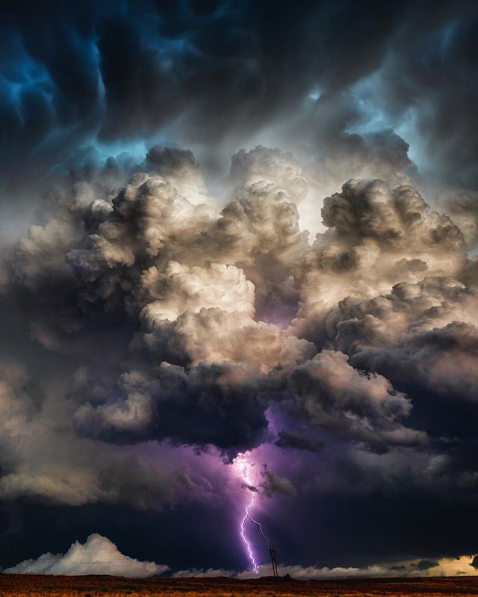
photography by Adam Kyle Jackson powerful nature
Solar System 10 Things to Know: Planetary Atmospheres
Every time you take a breath of fresh air, it’s easy to forget you can safely do so because of Earth’s atmosphere. Life on Earth could not exist without that protective cover that keeps us warm, allows us to breathe and protects us from harmful radiation—among other things.
What makes Earth’s atmosphere special, and how do other planets’ atmospheres compare? Here are 10 tidbits:
1. On Earth, we live in the troposphere, the closest atmospheric layer to Earth’s surface. “Tropos” means “change,” and the name reflects our constantly changing weather and mixture of gases.

It’s 5 to 9 miles (8 to 14 kilometers) thick, depending on where you are on Earth, and it’s the densest layer of atmosphere. When we breathe, we’re taking in an air mixture of about 78 percent nitrogen, 21 percent oxygen and 1 percent argon, water vapor and carbon dioxide. More on Earth’s atmosphere›

2. Mars has a very thin atmosphere, nearly all carbon dioxide. Because of the Red Planet’s low atmospheric pressure, and with little methane or water vapor to reinforce the weak greenhouse effect (warming that results when the atmosphere traps heat radiating from the planet toward space), Mars’ surface remains quite cold, the average surface temperature being about -82 degrees Fahrenheit (minus 63 degrees Celsius). More on the greenhouse effect›

3. Venus’ atmosphere, like Mars’, is nearly all carbon dioxide. However, Venus has about 154,000 times more carbon dioxide in its atmosphere than Earth (and about 19,000 times more than Mars does), producing a runaway greenhouse effect and a surface temperature hot enough to melt lead. A runaway greenhouse effect is when a planet’s atmosphere and surface temperature keep increasing until the surface gets so hot that its oceans boil away. More on the greenhouse effect›

4. Jupiter likely has three distinct cloud layers (composed of ammonia, ammonium hydrosulfide and water) in its “skies” that, taken together, span an altitude range of about 44 miles (71 kilometers). The planet’s fast rotation—spinning once every 10 hours—creates strong jet streams, separating its clouds into dark belts and bright zones wrapping around the circumference of the planet. More on Jupiter›

5. Saturn’s atmosphere—where our Cassini spacecraft ended its 13 extraordinary years of exploration of the planet—has a few unusual features. Its winds are among the fastest in the solar system, reaching speeds of 1,118 miles (1,800 kilometers) per hour. Saturn may be the only planet in our solar system with a warm polar vortex (a mass of swirling atmospheric gas around the pole) at both the North and South poles. Also, the vortices have “eye-wall clouds,” making them hurricane-like systems like those on Earth.
Another uniquely striking feature is a hexagon-shaped jet streamencircling the North Pole. In addition, about every 20 to 30 Earth years, Saturn hosts a megastorm (a great storm that can last many months). More on Saturn›

6. Uranus gets its signature blue-green color from the cold methane gas in its atmosphere and a lack of high clouds. The planet’s minimum troposphere temperature is 49 Kelvin (minus 224.2 degrees Celsius), making it even colder than Neptune in some places. Its winds move backward at the equator, blowing against the planet’s rotation. Closer to the poles, winds shift forward and flow with the planet’s rotation. More on Uranus›

7. Neptune is the windiest planet in our solar system. Despite its great distance and low energy input from the Sun, wind speeds at Neptune surpass 1,200 miles per hour (2,000 kilometers per hour), making them three times stronger than Jupiter’s and nine times stronger than Earth’s. Even Earth’s most powerful winds hit only about 250 miles per hour (400 kilometers per hour). Also, Neptune’s atmosphere is blue for the very same reasons as Uranus’ atmosphere. More on Neptune›

8. WASP-39b, a hot, bloated, Saturn-like exoplanet (planet outside of our solar system) some 700 light-years away, apparently has a lot of water in its atmosphere. In fact, scientists estimate that it has about three times as much water as Saturn does. More on this exoplanet›

9. A weather forecast on “hot Jupiters”—blistering, Jupiter-like exoplanets that orbit very close to their stars—might mention cloudy nights and sunny days, with highs of 2,400 degrees Fahrenheit (about 1,300 degrees Celsius, or 1,600 Kelvin). Their cloud composition depends on their temperature, and studies suggest that the clouds are unevenly distributed. More on these exoplanets›

10. 55 Cancri e, a “super Earth” exoplanet (a planet outside of our solar system with a diameter between Earth’s and Neptune’s) that may be covered in lava, likely has an atmosphere containing nitrogen, water and even oxygen–molecules found in our atmosphere–but with much higher temperatures throughout. Orbiting so close to its host star, the planet could not maintain liquid water and likely would not be able to support life. More on this exoplanet›
Read the full version of this week’s Solar System 10 Things to Know HERE.
Make sure to follow us on Tumblr for your regular dose of space: http://nasa.tumblr.com.

‘Displaying the Various Phenomena of the Atmosphere’ - Diagram of Meteorology, 1846 - drawn and engraved by John Emslie. Written by James Reynolds of 174 Strand in London, 1850-1860.



Undulatus asperatus
Undulatus asperatus is a new separate cloud classification currently on petition to be added to the official list of observable cloud types. If accepted as a distinct cloud type, it will be the first addition to the list of cloud types since cirrus intortus was added in 1951. It was proposed by the founder of The Cloud Appreciation Society. Recognition of the cloud classification is still pending.
The experience of these clouds is as if, it is said, one were below the Sea looking up at the surface of the water. Yet when they occur, there reportedly is little to no turbulence at the land surface. The clouds are most common in the Great Plains of the United States following thunderstorm activity in the earlier parts of the day.
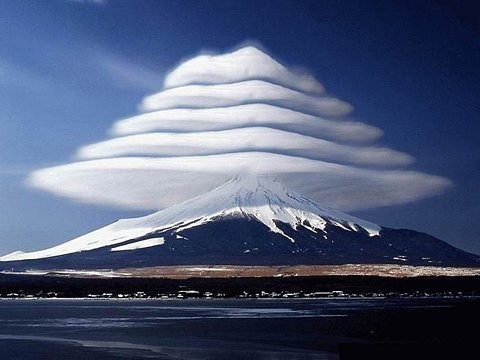
Lenticular Clouds, Mount Fuji, Japan
photo via permsiri


New from Tornado Titans!
From @btsullivan91 - A stunning sunset mothership supercell over Roswell, New Mexico last night! The storm produced a powerful dust storm and destructive hail up to 3 inches in diameter! #newmexico #nmwx #storm #ufo #nature #skyporn #cloudporn #sunset #sun #sky #weather https://instagr.am/p/CPddgEGrFIW/

New from Tornado Titans!
@brettwrightphoto captured this cosmic looking supercell yesterday south of Andrews, TX. What would you do if this was coming at you? #txwx #UFO #weather #rain #rainyweather #storms #cloud #cloudporn #clouds #nature_lover #nature #nature_photo #nature_seeker #natgeoadventure #natgeoyourshot #natgeotravelpic #landscapes #landscapelover #epicsky #sky #skyporn #supercell #thunderstorm #storm #stormchasing #instaclouds #tv_clouds #ig_stormclouds #extremeweather https://instagr.am/p/CPnxoyzrnHJ/
Fallstreak Holes

Occasionally clouds appear to have a hole in them; these are known as fallstreak holes or hole-punch clouds. (Image credit: J. Stevens/NASA; via NASA Earth Observatory) Read the full article
